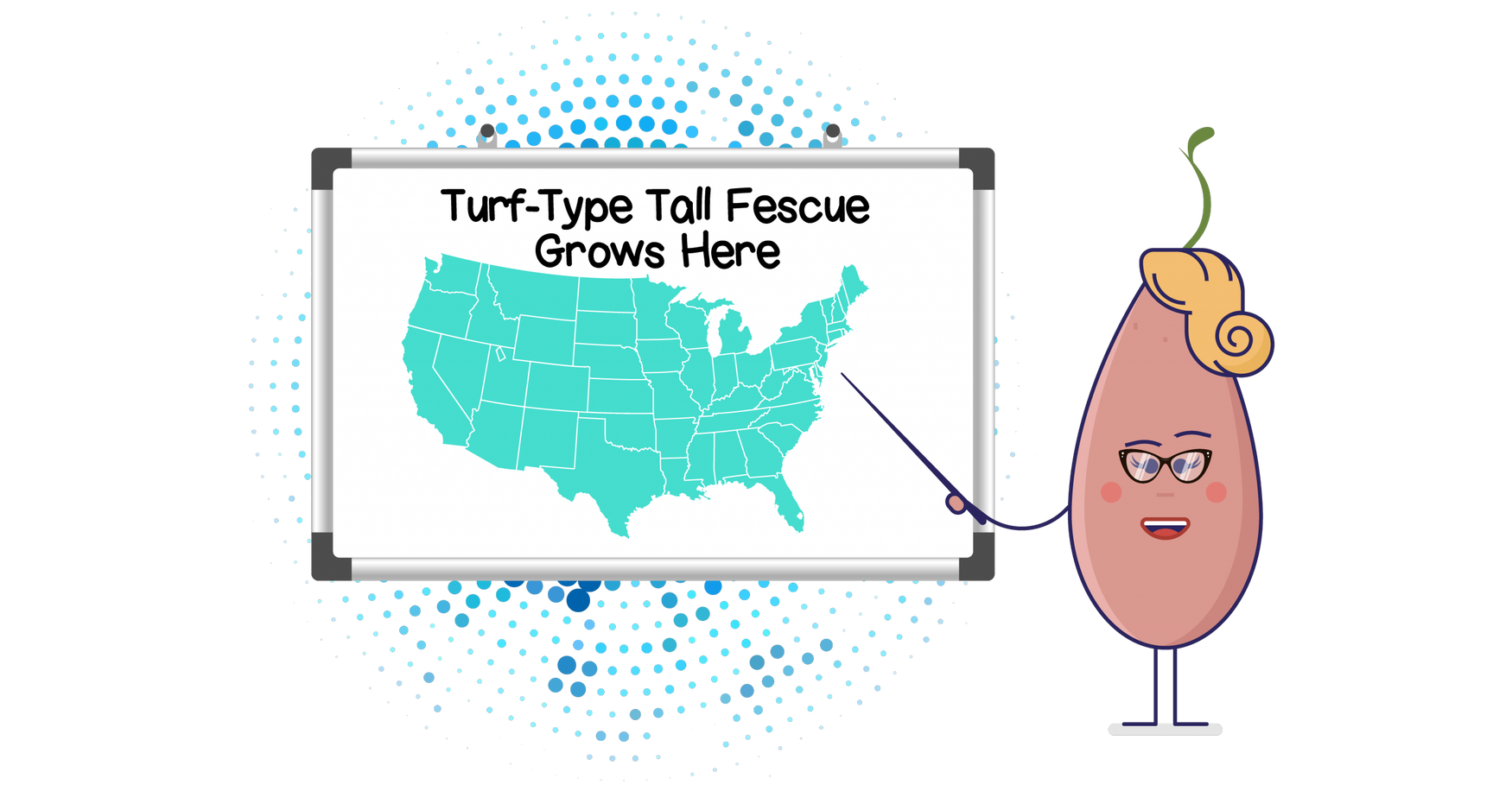Turf Type Tall Fescue: The Hardy Seed That Will Settle on Nearly Any Lawn in America
Share

Hancock offers nearly 20 different blends of grass seeds because there are dozens of varieties of lawn enthusiasts who are all looking for something different. It’s our goal to cover as many of their needs as possible at the lowest possible price. There simply isn’t a “one-seed-fits-all” option in the world of lawn care.
But if we had to choose one that comes closest to covering the needs of as many clients as possible, we would have to go with our Hancock Turf Type Tall Fescue blend (sometimes referred to as Southern Fescue). Hancock’s blend combines the best features of Cayenne Tall Fescue, Blade Runner II Tall Fescue and Firewall Tall Fescue.
If you’re looking to seed a new lawn and your head is spinning from all the options available, there’s a decent chance that Hancock Turf Type Tall Fescue will work for you. Benefits include a wide range of habitability, as well as resistance to disease, high temperatures, high soil salt content and heavy foot traffic.
WHERE:
Almost anywhere. If you look at the map in the image above, you’ll see that Hancock’s Turf Type Tall Fescue is a good fit if you live in the continental United States.
Few factors are as important as climate when starting a new lawn. Traditionally, fescue has been popular in the colder regions of the northern United States as well as the “transition zones” that separate them from the warmer South. Hancock has bred its Fescue to thrive even in Florida, our own backyard.
If you plan on spreading Hancock's Turf Type Tall Fescue in the Southern United States during a warm season, you'll need to plant it in shade with plenty of watering. It's a tough breed, but only so much can stand up to the Florida sun!
And don’t think you’re limited to lawns; we don’t include the term “turf” in the title for no good reason! Our Turf Type Tall Fescue is also popular for roughage on golf courses and for use as traditional athletic field turf.

WHEN:
Late Winter and late Summer is the best time to start a Turf Type Tall Fescue lawn, as it grows best during Spring and Fall. It grows rapidly in a “bunch-type” formation, which suggests that a treatment with pre-emergence herbicides will be needed to keep weeds at bay.
If you’re planning on planting during late Summer, especially in the warm Southeast and Southwest corners of the country, sow in shade. Turf Type Tall Fescue is a hardy blend, however no soil will stay healthy under that intense Summer sun.
HOW:
You should always start a lawn project by testing your soil (you can take a sample to your local Agriculture Extension Agent for extensive stats, usually for free). Fescue is, as ever, hardy when it comes to pH requirements: Anything between 4.7 and 8.5 is an acceptable score to support this blend.
If you’re looking to start a new lawn, apply seven to ten pounds of seed per 1,000 sq. ft., or apply six to eight pounds per 1,000 sq. ft. if you’re doing yearly overseeding. Bury them between 1/8 and 1/4 of an inch for optimal growth. Apply three to four pounds of slow-release fertilizer per 1,000 sq. ft.
As for the rest of the year, mowing at a height of 1.5 inches to 3 inches. Although some have reported success with mowing heights as low as 1 inch, we don’t recommend lower than 1.5.
Good luck and be sure to share your results with Hancock Seed!















